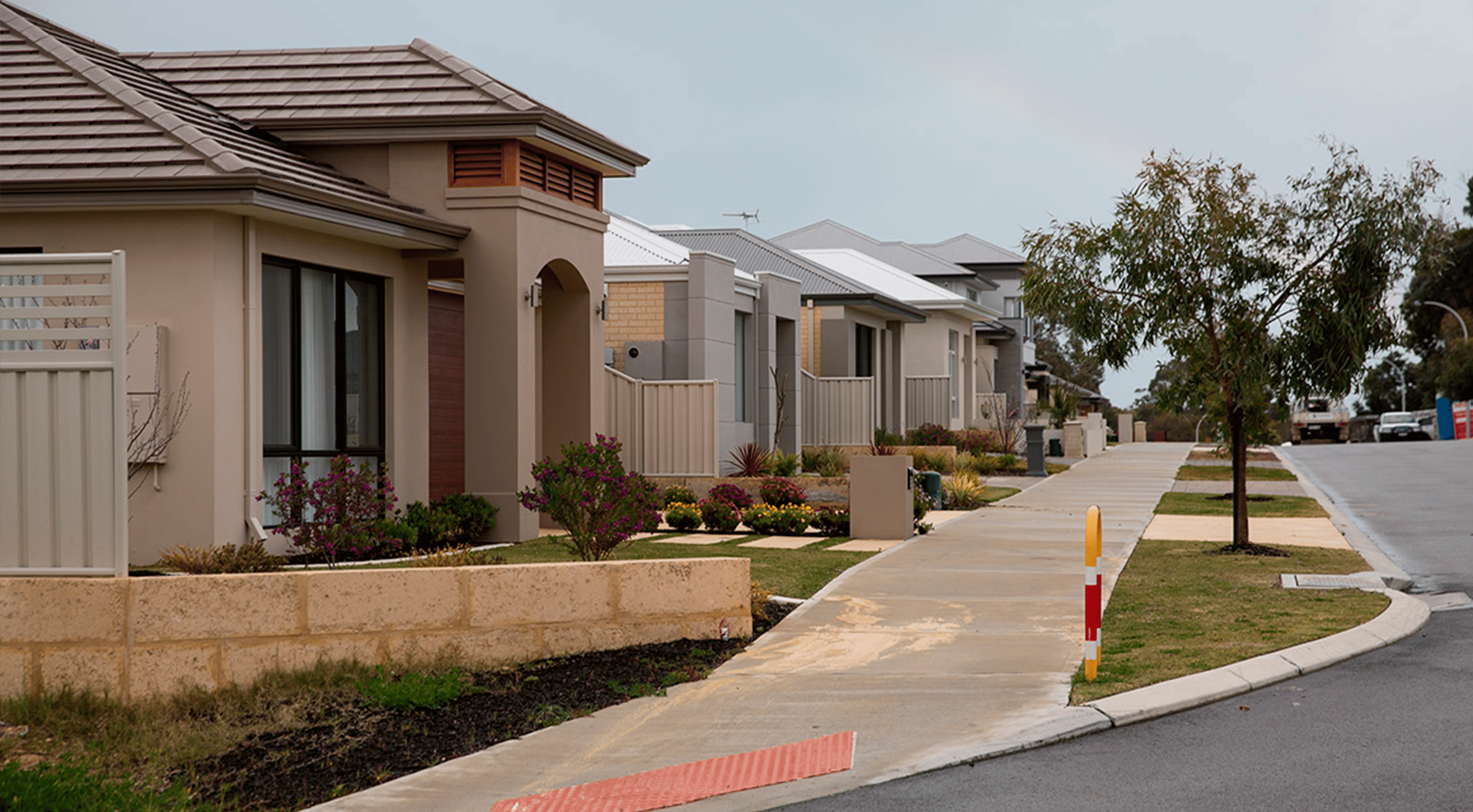Features > Property News & Insights > Investment News
Investors rush to capitalise on tight rental market

Image from Glen McCurtayne/Sydney Morning Herald
KEY POINTS
- Rental vacancy rates tightened further in July, according to PropTrack, underlining a grim picture for tenants searching for homes to rent
- 14 of the 15 markets surveyed by PropTrack have a vacancy rate of less than 1.68%, with Canberra (2%) offering the most choice for tenants
- Separate research from CoreLogic shows the high rate of rental growth we’ve seen in recent years is slowing, but rents remain at record highs in most markets
- High rents are attracting more investors to the market and also forcing tenants to look for other options, such as sharing houses or buying their own homes
New data from REA Group’s PropTrack shows rental vacancy rates across Australia remain extremely low - barely changing in a year.
Although investor activity in the property market has picked up significantly over the last year, this has been offset by demand for property caused by strong population growth.
Five out of the eight capital cities actually saw tighter rental market conditions in July, with Sydney unchanged and Melbourne easing only slightly.
The details
PropTrack’s latest Market Insight report found rental vacancy rates tightened slightly in July 2024, dropping 0.01 percentage points to sit at 1.42%.
10 of the 15 cities and regions measured by PropTrack saw tighter rental market conditions in July, with only Melbourne (+0.05%), Canberra (+0.2%) and the “Rest of NT” (+0.24%) areas seeing any easing of conditions for tenants.
Sydney and the “Rest of Qld” were unchanged.
PropTrack Senior Economist Anne Flaherty says the slight drop in vacancy nationally was driven by regional markets, which recorded a 0.04% decline month-on-month to 1.28%.
Capital cities held steady at 1.47% over July.
Darwin (1.03%) has now overtaken Adelaide (1.06%) to record the lowest vacancy of any capital city, tightening 0.15% over the month, while Hobart saw the sharpest decline in vacancy of any capital city in July, down 0.17% to 1.11%.
Canberra had the highest rental vacancy of any region of Australia in July at 2%.
However, this is a market still weighted heavily in favour of landlords.
Most observers regard a rental market with a 3% vacancy rate as “balanced”—meaning potential tenants have a reasonable choice of properties to choose from, while landlords don’t need to discount rents to attract tenants.
PropTrack’s monthly figures show a slight reversal in a trend that has seen national rental conditions ease by 0.18% over the last quarter.
However, in a stark illustration of just how tough things are for tenants, the national vacancy rate is just 0.02% higher than it was a year ago.
Investors are back
Vacancy rates would be even worse if there hadn’t been a large increase in the number of investors entering the market, attracted by high rents at a time of poor supply.
“Supporting the rise in capital city vacancies has been an increase in investor activity, with the number of new loan commitments to investors up 25% over the June quarter of 2024 compared to the same period last year,” Ms Flaherty says.
“Higher investor activity has resulted in more rental properties hitting the market, helping to counteract the increase in demand from population growth.”
However, Ms Flaherty concedes that “conditions remain incredibly tough for Australia’s renters.”
So how do vacancy rates translate into rent prices?
Although rental vacancy rates remain extremely tight, rival data house CoreLogic says that national rents increased just 0.1% during July.
Annually, national rental growth was 7.8% per cent, which is the slowest annual change in the past three years, although it is still extremely high by historical standards.
The results were varied, with rents rising 0.6% in Adelaide and 0.3% in Melbourne and Perth while remaining flat in Darwin and Canberra.
In contrast, rents have declined in Sydney (-0.1%), Brisbane (-0.1%), and Hobart (-0.3%).
Nevertheless, national rents are still sitting at record highs, and the median weekly rent has increased by around $180 over the past five years.
CoreLogic economist Kaytlin Ezzy says that though results varied across the capitals, it was clear an “affordability ceiling” had been reached in major cities.
“Many are turning to alternatives such as shared housing, relocation to more affordable areas, or leaving the rental market altogether,” Ms Ezzy says.
“The high cost of renting is also likely to be motivating more people with the financial means to service mortgage repayment and job security, to buy their first home, and we’re also seeing investors take notice too.”
Despite a slowdown in net overseas migration and more subdued rental growth, Kaytlin Ezzy says substantial relief for the rental market seems unlikely in the short term.
“Low supply will likely continue to put upward pressure on rents, albeit at a slower pace,” she says.
“With dwelling approvals and commencements at historic lows, providing sufficient new housing will not be a quick fix and remains a genuine challenge for policymakers, the property industry and, of course, tenants.”
Stay Up to Date
with the Latest Australian Property News, Insights & Education.




.png?width=292&height=292&name=Copy%20Link%20(1).png)
 SIGN UP FOR FREE NEWSLETTER
SIGN UP FOR FREE NEWSLETTER
%20(1).png)

.png)




.jpg?width=1920&height=1080&name=Warning%2c%20You%20Might%20Be%20Facing%20Higher%20Taxes%20Soon%20(1).jpg)





.png?width=1920&height=1080&name=Rate%20Drops%20Signal%20BIGGEST%20Property%20Boom%20in%20DECADES%20(1).png)

.jpg?width=1920&height=1080&name=Labor%20vs%20Liberal%20These%20Housing%20Policies%20Could%20Change%20the%20Property%20Market%20Forever%20(1).jpg)
.jpg?width=1920&height=1080&name=QLD%20Slashes%20Stamp%20Duty%20Big%20News%20for%20Investors%20%26%20Home%20Buyers%20(1).jpg)
.jpg?width=1920&height=1080&name=Trump%20Just%20Slapped%20Tariffs%20%E2%80%93%20Here%E2%80%99s%20What%20It%20Means%20for%20Australia%20(1).jpg)
.jpg?width=1920&height=1080&name=Federal%20Budget%202025%20More%20Debt%2c%20No%20Housing%20%E2%80%93%20Here%E2%80%99s%20What%20You%20Need%20to%20Know%20(1).jpg)
.jpg?width=1920&height=1080&name=Australias%20Housing%20Crisis%20is%20about%20to%20get%20MUCH%20Worse%20(New%20Data%20Warns).jpg)
%20(1).jpg?width=1920&height=1080&name=Australias%20RENTAL%20CRISIS%20Hits%20ROCK%20BOTTOM!%20(2025%20Update)%20(1).jpg)
%20(1).png?width=1920&height=1080&name=Is%20Adelaide%20Still%20a%20Good%20Property%20Investment%20(2025%20UPDATE)%20(1).png)
.jpg?width=1920&height=1080&name=RBA%20Shocks%20with%20Rate%20Cuts!%20What%E2%80%99s%20Next%20for%20Property%20Investors%20(1).jpg)
%20(1).jpg?width=1920&height=1080&name=I%20Predict%20The%20Feb%20Rate%20Cut%20(My%20Price%20Growth%20Prediction)%20(1).jpg)
.png?width=1920&height=1080&name=Why%20Property%20Prices%20Will%20Rise%20in%202025%20Market%20Predictions%20(1).png)
.jpg?width=1920&height=1080&name=Why%20Investors%20Are%20Choosing%20Apartments%20Over%20Houses%202%20(1).jpg)
.jpg?width=1920&height=1080&name=Why%20Rate%20Cuts%20Will%20Trigger%20A%20Property%20Boom%20(1).jpg)
.jpg?width=1920&height=1080&name=Retire%20On%202Million%20With%20One%20Property%20(Using%20SMSF).jpg)
.jpg?width=1920&height=1080&name=4%20Reasons%20Why%20You%20Should%20Invest%20in%20Melbourne%20Now%20(1).jpg)
%20(1).jpg?width=1920&height=1080&name=Old%20Property%20vs%20New%20Property%20(Facts%20and%20Figures%20Revealed)%20(1).jpg)
%20(1).jpg?width=1920&height=1080&name=Will%20The%20New%20QLD%20Govt%20Create%20a%20Property%20Boom%20or%20Bust%20(My%20Prediction)%20(1).jpg)
%20Scott%20Kuru%20(1).jpg?width=1920&height=1080&name=Inflation%20Hits%20Three-Year%20Low%20(Will%20RBA%20Cut%20Rates%20Soon)%20Scott%20Kuru%20(1).jpg)
.jpg?width=1920&height=1080&name=How%20to%20Buy%20Investment%20Property%20Through%20SMSF_%20The%20Ultimate%20Guide%20(1).jpg)
.jpg?width=1920&height=1080&name=Victoria%20Slashes%20Stamp%20Duty%20Melbourne%20Set%20to%20Boom%20Scott%20Kuru%20(1).jpg)
.png?width=1571&height=861&name=Are%20Foreign%20Buyers%20Really%20Driving%20Up%20Australian%20Property%20Prices%20(1).png)
.jpg?width=1920&height=1080&name=The%20Single%20Factor%20That%20Predicts%20Property%20Growth%20Regions%20(1).jpg)
%20Scott%20Kuru%20(1).jpg?width=1920&height=1080&name=My%20Prediction%20On%20Rates%20%26%20Negative%20Gearing%20(Market%20Crash)%20Scott%20Kuru%20(1).jpg)

-1.png?width=1920&height=1080&name=Major%20Banks%20Cut%20Rates%20Will%20RBA%20Follow%20Suit%20(Sept%20Rate%20Update)-1.png)
%20Scott%20Kuru-1.png?width=1920&height=1080&name=Rate%20Cut%20Coming%20What%20New%20Zealands%20Move%20Means%20for%20Australia%20(Sept%20Prediction)%20Scott%20Kuru-1.png)
%20(1).jpg?width=1920&height=1080&name=Buy%20when%20the%20interest%20rates%20are%20high!%20(Why%20you%20must%20buy%20now!)%20(1).jpg)
.jpg?width=1920&height=1080&name=Carms_Revised%20Taxes%20Due%20Aug%209%20YT%20Thumbnail02%20(1).jpg)
.jpg?width=1920&height=1080&name=Carms_Too%20Little%20Too%20Late%20Aug%207%20YT%20Thumbnail01%20(1).jpg)









.jpg?width=1920&height=1080&name=Carms_Rate%20Drop%20In%20July%20Jun%2010%20YT%20Thumbnail02%20(1).jpg)
.jpg?width=1920&height=1080&name=Carms_Own%20a%20Property%20V6%20Jun%205_YT%20Thumbnail%20(1).jpg)









.png?width=1920&height=1080&name=Artboard%201%20(3).png)






.jpg?width=1920&height=1080&name=YT%20thumbnail%20%20(1).jpg)

